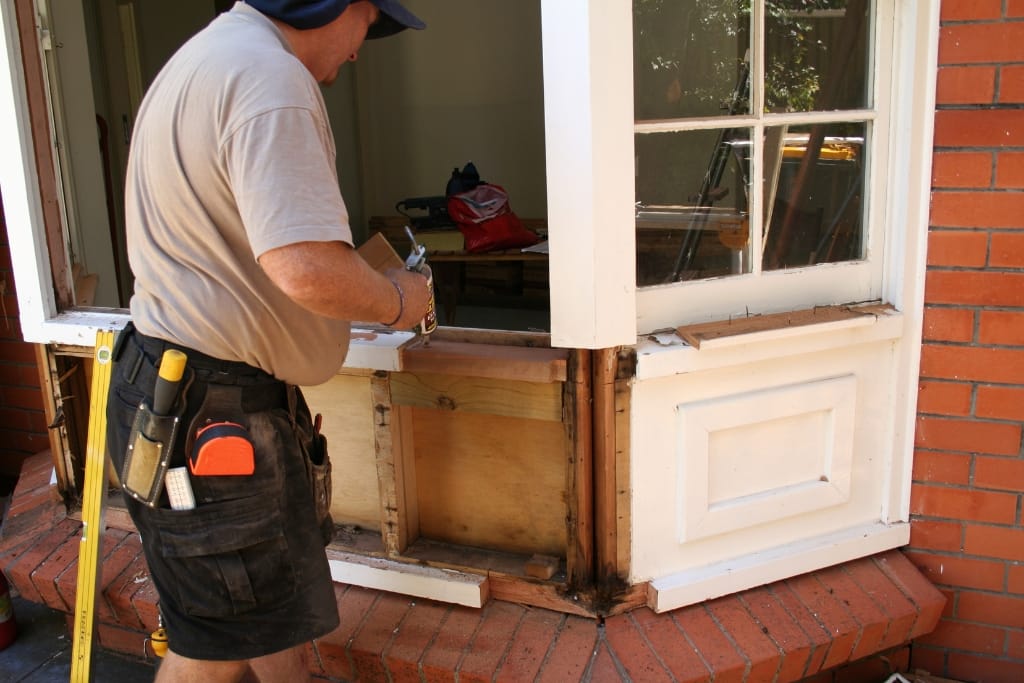Dry rot poses a significant threat to homes, particularly those with timber components.
This fungal decay can weaken the structural framework of your residence, leading to extensive damage and expensive repairs if not promptly addressed.
Recognizing the early signs of dry rot is crucial for homeowners to protect their investments and ensure the safety and stability of their living environment.
Understanding these indicators will empower you to take action before the problem worsens, safeguarding your home for years to come.
1)) Visible Damage
One of the most obvious signs of dry rot in your home is visible damage to wooden surfaces.
This could include crumbling or cracking wood, as well as discoloration or a musty smell.
If you notice any of these signs, it's important to contact a dry rot repair contractor for an assessment.
2)) Softened Wood
Another sign of dry rot is softened wood that feels spongy or crumbles easily when touched.
This indicates that the wood has been weakened by fungal growth and needs to be replaced before it causes further damage.
3)) Peeling Paint Or Wallpaper
If you notice peeling paint or wallpaper in areas with no obvious water damage, it could be a sign of underlying dry rot.
The moisture from the fungal growth can cause paint and wallpaper to peel away from the surface, so it's important to investigate further.
4)) Fungal Growth
One of the most telling signs of dry rot is the presence of fungal growth on wooden surfaces.
This can appear as white or grey patches on the wood, often accompanied by a musty odor.
If you see any signs of fungal growth, it's crucial to act quickly to prevent further damage.
5)) Hollow-Sounding Wood
When tapping on wooden surfaces, if they sound hollow rather than solid, it could indicate dry rot has compromised the integrity of the wood.
This is a serious issue that requires immediate attention from a professional dry rot repair contractor.
6)) Sagging Floors Or Ceilings
Dry rot can cause structural issues in your home, leading to sagging floors or ceilings in severe cases.
If you notice any changes in your floors or ceilings, such as sagging or bowing, it's essential to have them inspected by a professional contractor.
7)) Insect Infestations
Dry rot creates an ideal environment for insects such as termites and carpenter ants to thrive in your home.
If you notice an increase in insect activity around wooden structures, it could be a sign of underlying dry rot issues that need to be addressed promptly.
Conclusion
Being proactive about identifying and addressing dry rot is essential for maintaining the integrity and safety of your home.
The signs outlined in this article can serve as critical indicators of a problem that, if left unchecked, can lead to severe structural damage and hefty repair costs.
By remaining vigilant and acting promptly upon noticing any of these symptoms—such as visible damage, softened wood, or signs of fungal growth—you can safeguard your investment and prevent more extensive repairs in the future.
Hiring a qualified dry rot repair contractor is vital in diagnosing the extent of the issue and implementing effective solutions.
These professionals possess the expertise and tools necessary to not only repair the damaged areas but also to assess and rectify the underlying conditions that contributed to the dry rot in the first place.
Early intervention is key; taking action now can save you time, money, and stress down the line, ensuring that your home remains a haven for years to come.
Don't hesitate to reach out for professional help if you suspect dry rot—your home deserves the best care!
Download Our Free E-book!








